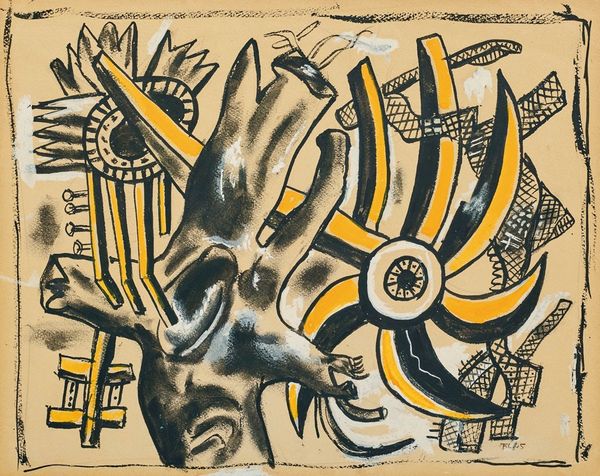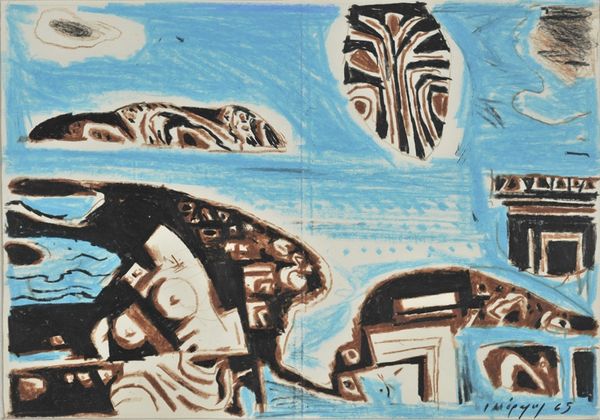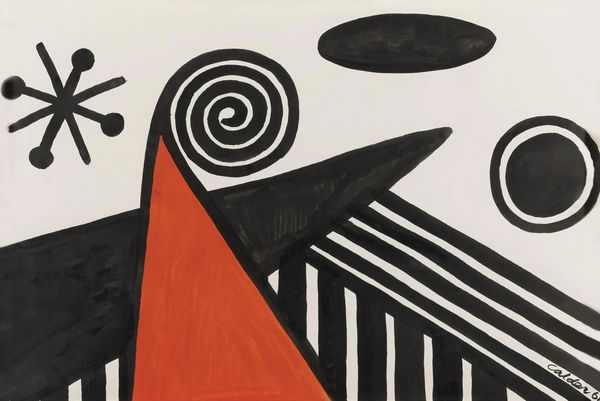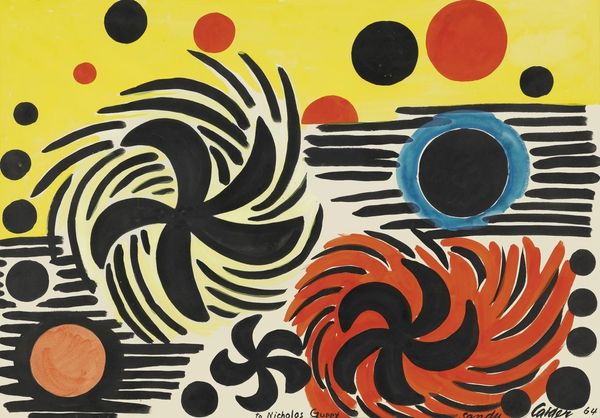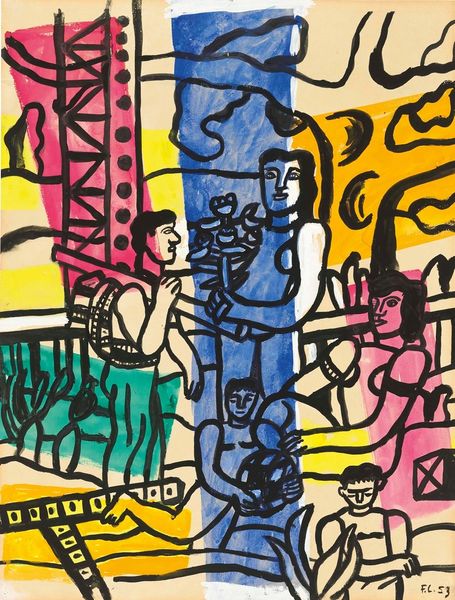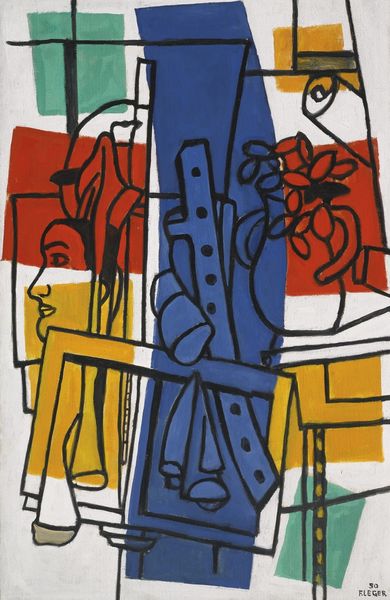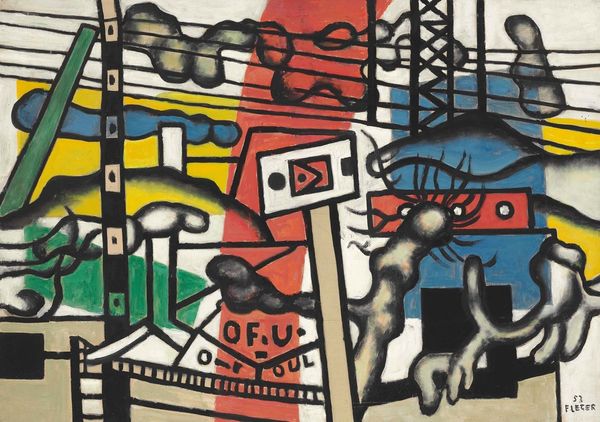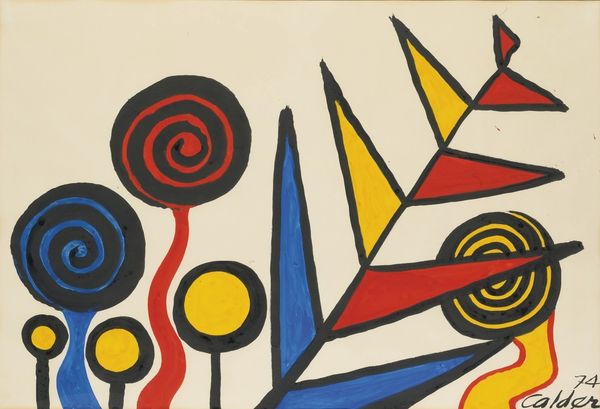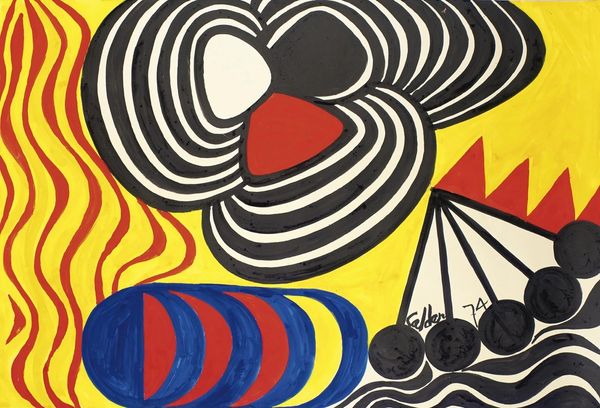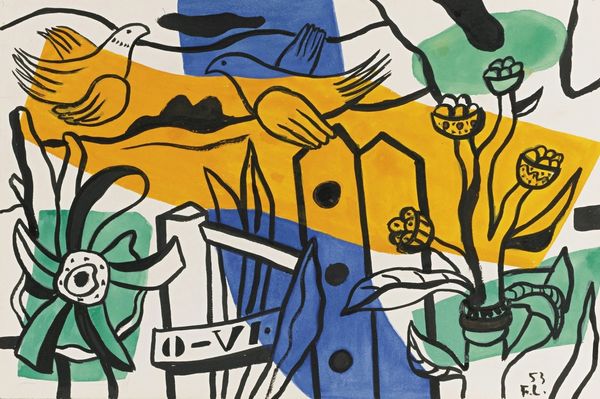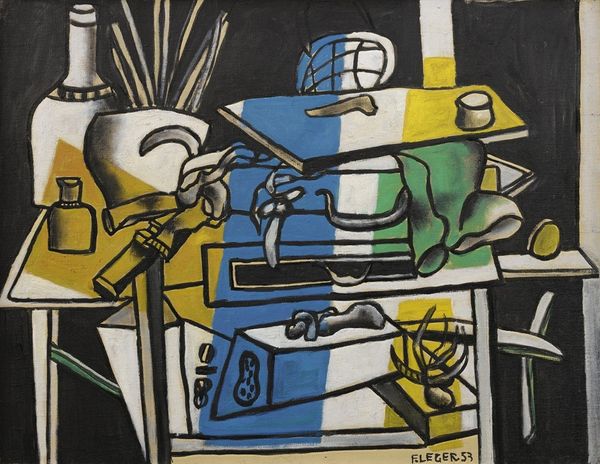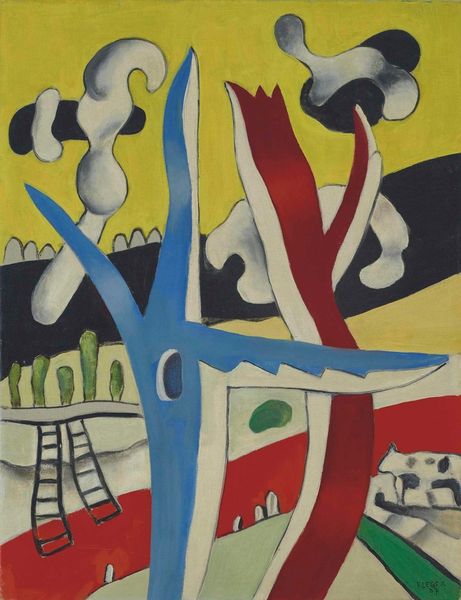
Copyright: Modern Artists: Artvee
Editor: This is Fernand Léger’s "Paysage d’hiver," or "Winter Landscape," from 1953, done with oil paints. The strong lines give it a feeling of almost industrial construction… What do you make of it? Curator: The landscape here isn't just about visual representation, it is about Léger processing materials of the world around him through form and color. See how the industrial scaffold becomes as important as the naturalistic representations of trees? The materiality of the paint itself is essential to interpreting the work. Consider Léger's methods— how does this piece build upon those processes? Editor: That makes me think about the social context too, especially post-war industrial growth, maybe reflected through the geometry of those power lines. What do you mean about his methods, though? Curator: Léger embraced mass production aesthetics; his work often blurs lines between fine art and design for mass consumption. Think about the smooth application of paint: it doesn’t attempt to disguise its manufacture; what boundaries is he challenging between different kinds of "making?" Editor: So he’s really engaging with the "means of production" visually here, isn't he? Presenting industry as just another material element of our surroundings. Curator: Exactly! And the title – a landscape, which tradition dictates we see through an aesthetic, pastoral lens – immediately throws our expectations into question. The making is right there, undisguised, drawing attention to itself. Editor: I never thought about landscape that way, not as raw material itself. Curator: Considering materiality and process changes our understanding and relationship with the artwork, don't you think? Editor: Absolutely. It gives me a fresh perspective on Léger and his place in art history. Thanks!
Comments
No comments
Be the first to comment and join the conversation on the ultimate creative platform.
